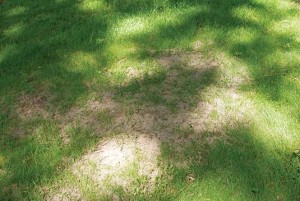
The nature (and number) of ant nests. Photo: courtesy of, and copyrighted by, Gene White, pmimages@earthlink.net
Everyone understands that correctly identifying a pest is the first step toward gaining control. But while morphological features such as the number of node segments, worker morphs, or antennal segments are key to ant ID, focusing on the big-picture categories of ant life is essential to tailor the best management plan:
⦁ Does the species in question have a single queen (monogynous), or can it have multiple queens (polygynous)?
⦁ Is there a single nest (monodomous, fairly rare), or the possibility of multiple nests (polydomous)?
To complicate matters, even polygynous, polydomous colonies start out with a single queen in a single nest. However, it’s better to be safe than sorry and operate under the assumption that polygynous species have multiple queens.
Putting in a little extra inspection time can save you a lot of time down the road, because tracking trailing ants back to a nest, treating the nest, and calling it a day might be fool’s gold. You might have been led to just one out of many queens and nesting sites — or even to a queenless nesting site.
If you do locate multiple nests, adjust your timeline for control accordingly, especially if you’re relying primarily on baits. Be careful, too, when using repellent insecticides around species that can splinter, as these applications could potentially split a colony into two or more functional units and leave you worse off than when you started.
Keep an open mind, gather the facts about the species in question, and don’t be too quick to think you have a complete understanding of the extent of the colony. Ant colonies can be both highly complex and mercurial. Underestimate them at your own risk.
You can reach Dr. Bennett Jordan, entomologist and staff scientist for the National Pest Management Association (NPMA), at bjordan@pestworld.org.
Leave A Comment